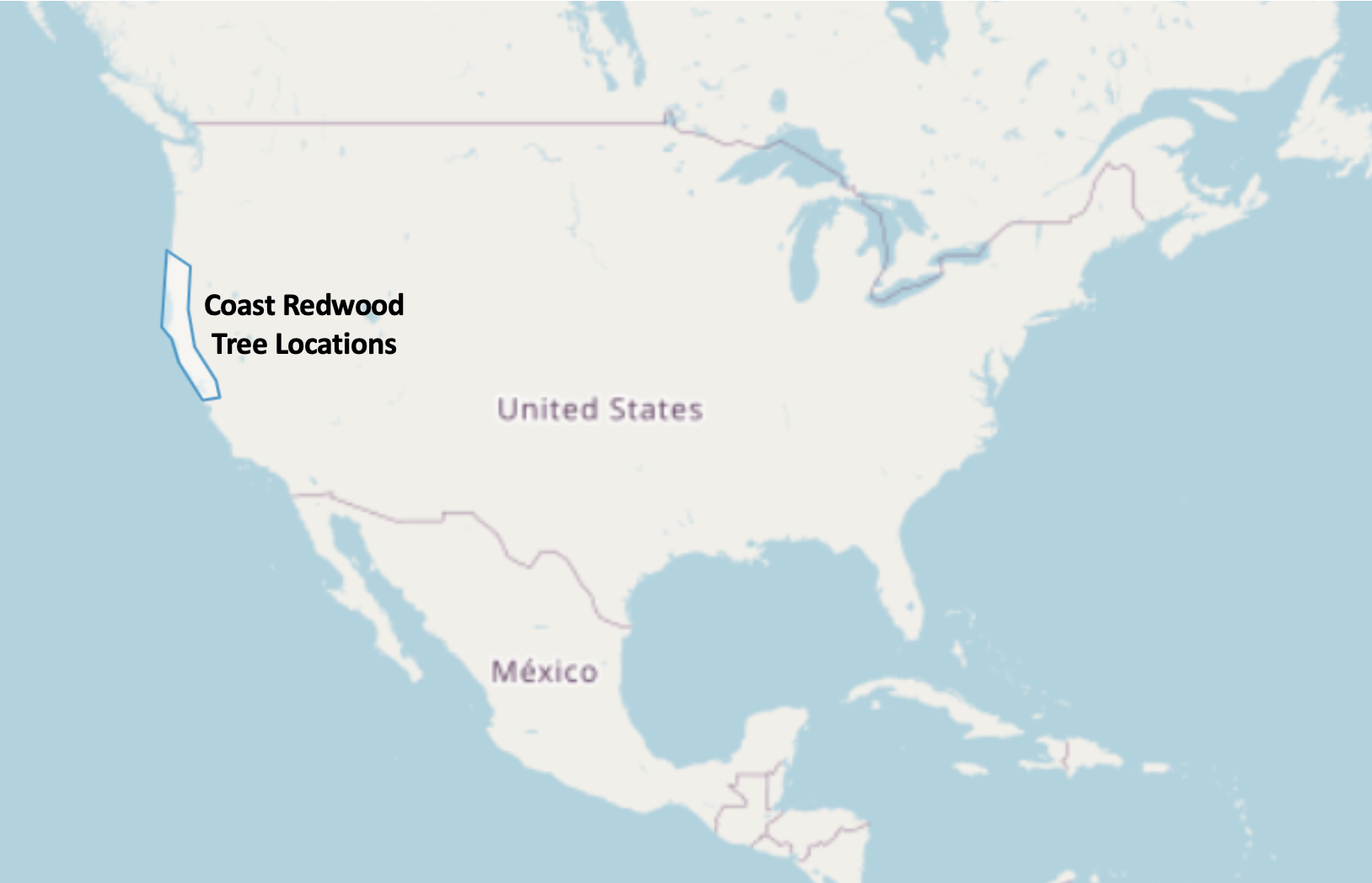NASA Moon Trees - Coast Redwood - GLOBE Observer
NASA Moon Trees - Coast Redwood

Redwood is endemic to the coastal area of northern California and southwestern Oregon. The redwoods occupy a narrow strip of land approximately 450 miles (724 km) in length and 5 to 35 miles (8-56 km) in width. The northern boundary of its range is marked by two groves on the Chetco River in the Siskiyou Mountains within 15 miles (25 km) of the California-Oregon border. The southern boundary of redwood's range is marked by a grove in Salmon Creek Canyon in the Santa Lucia Mountains of southern Monterey County, California. (Source: USDA Forest Service 
How to identify coast redwood trees:
Coast redwood trees are extremely tall evergreen trees with a narrow, pointed crown. They are the tallest trees in the world. Branches grow downward. Dark green needles are narrow and flat and grow in a single line on two sides of the twig. Coast Redwood trees produce both male and female cones on a single tree. Male pollen cones are small and egg-shaped, while female seed cones are elliptical. Learn more:
Coast Redwood | University of Redlands 
Several free apps will help you identify tree species, including LeafSnap 


Example images of coast redwood trees:

How to participate in the quest for the coast redwood trees:
1. Identify coast redwood trees. Using the Trees tool in the GLOBE Observer app, measure the tree's height and, if you have a tape measure, record its circumference. Please make sure you can clearly see the top and bottom of the tree and that you can walk to the base of the tree from an origin point of 25-75 feet away from the tree. Before submitting your observation, please type "#MoonTree" in the comment box.
2. The app will notify you of you are within a certain distance from from an existing Apollo 14 Coast Redwood Moon Tree. If you are able to find a specific Apollo 14 Coast Redwood Moon Tree, please take a tree height observation (and optional tree circumference if you have a tape measure handy). Before submitting your observation, please type "#MoonTree" in the comment box.
Note: Our information regarding the location and status of the existing Apollo 14 Moon Trees is based on the NASA Moon Trees Archive 
Accessible Apollo 14 Coast Redwood Moon Trees:
(Click on the links below to learn more about each of the Apollo 14 Moon Trees from the NASA Moon Trees Archive)
California
Arcata, California. 3 Coastal Redwoods at Humboldt State University 
Berkeley, California. 2 Coastal Redwoods at Tilden Nature Area 
Monterrey, California. Friendly Plaza. Latitude 
Sacramento, California. Capitol Park 
San Luis Obispo, California. Mission Plaza 
To see the locations of all known Moon Trees, visit the NASA Moon Trees Archive 








